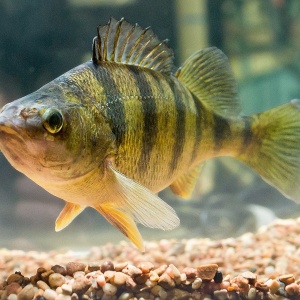
This paper by FCRN member Elinor Hallström assesses the nutritional content and climate impact of 37 seafood products. The paper finds high variability in nutritional and climate performance, with no consistent correlation between nutrition and climate impact across different seafood species. The paper calls for dietary advice to promote species with low climate impact and high nutritional value, including sprat, herring, mackerel and perch.
The 37 seafood products (including both saltwater and freshwater species) were chosen based on those commonly consumed in Sweden (although not necessarily produced in Sweden). For comparison, egg, pork, beef and chicken were also assessed.
The method chosen to assess nutrient density accounts for levels of desirable nutrients (e.g. protein or omega-3 fatty acids) and their minimum recommended intake, and also levels of undesirable components (saturated fatty acids and sodium) and their maximum recommended intake. See the supplementary information of the paper for a discussion of alternative methods that could be used to assess nutrient density.
The carbon footprint of each seafood type was assessed using published Life Cycle Assessment studies.
A combined nutrient and climate score was obtained for each food type by dividing the climate impact per kg by the nutrient density score. Some of the best-performing seafoods based on the combined score were European sprat, Atlantic mackerel, Atlantic herring, pink salmon, Alaskan pollock and perch. Eggs also scored well. Some of the worst-performing seafoods were farmed tilapia, plaice, scallops, Norway lobster and northern prawn (shrimp). Beef also falls into the worst-performing category for combined nutrient and climate scores. The figure below illustrates nutrient and climate scores for different food categories.

Image: Figure 1, Hallström et al. Combined nutrient density and climate impact of seafoods analyzed. Log transformed data scaled around average representing the median of all seafoods. Bubble size reflects Swedish consumption rates from Ziegler and Bergman (2017) on a continuous scale, i.e. each bubble has its own size. B = beef, P = pork, C = chicken, E = egg.
Abstract
National authorities in many countries advise their populations to eat more seafood, for health and sometimes for environmental purposes, but give little guidance as to what type of seafood should be consumed. The large diversity in species and production methods results in variability both in the nutritional content and in the environmental performance of seafoods. More targeted dietary advice for sustainable seafood consumption requires a better understanding of the relative nutritional benefits against environmental costs of various types of seafood. This study analyzes the combined climate and nutritional performance of seafood commonly consumed in Sweden, originating all over the world. Nutrient density scores, assessed by seven alternative methods, are combined with species- technology- and origin-specific greenhouse gas emission data for 37 types of seafood. An integrated score indicates which seafood products provide the greatest nutritional value at the lowest climate costs and hence should be promoted from this perspective. Results show that seafoods consumed in Sweden differ widely in nutritional value as well as climate impact and that the two measures are not correlated across all species. Dietary changes towards increased consumption of more seafood choices where a correlation exists (e.g. pelagic species like sprat, herring and mackerel) would benefit both health and climate. Seafoods with a higher climate impact in relation to their nutritional value (e.g. shrimp, Pangasius and plaice) should, on the other hand, not be promoted in dietary advice. The effect of individual nutrients and implications of different nutrient density scores is evaluated. This research is a first step towards modelling the joint nutritional and climate benefits of seafood as a concrete baseline for policy-making, e.g. in dietary advice. It should be followed up by modelling other species, including environmental toxins in seafood in the nutrition score, and expanding to cover other environmental aspects.
Reference
Hallström, E., Bergman, K., Mifflin, K., Parker, R., Tyedmers, P., Troell, M. and Ziegler, F., 2019. Combined climate and nutritional performance of seafoods. Journal of Cleaner Production, 230, pp.402-411.
Read the full paper here. See also the Foodsource resource Which diets generate fewer GHG emissions and other environmental impacts?












Post a new comment »